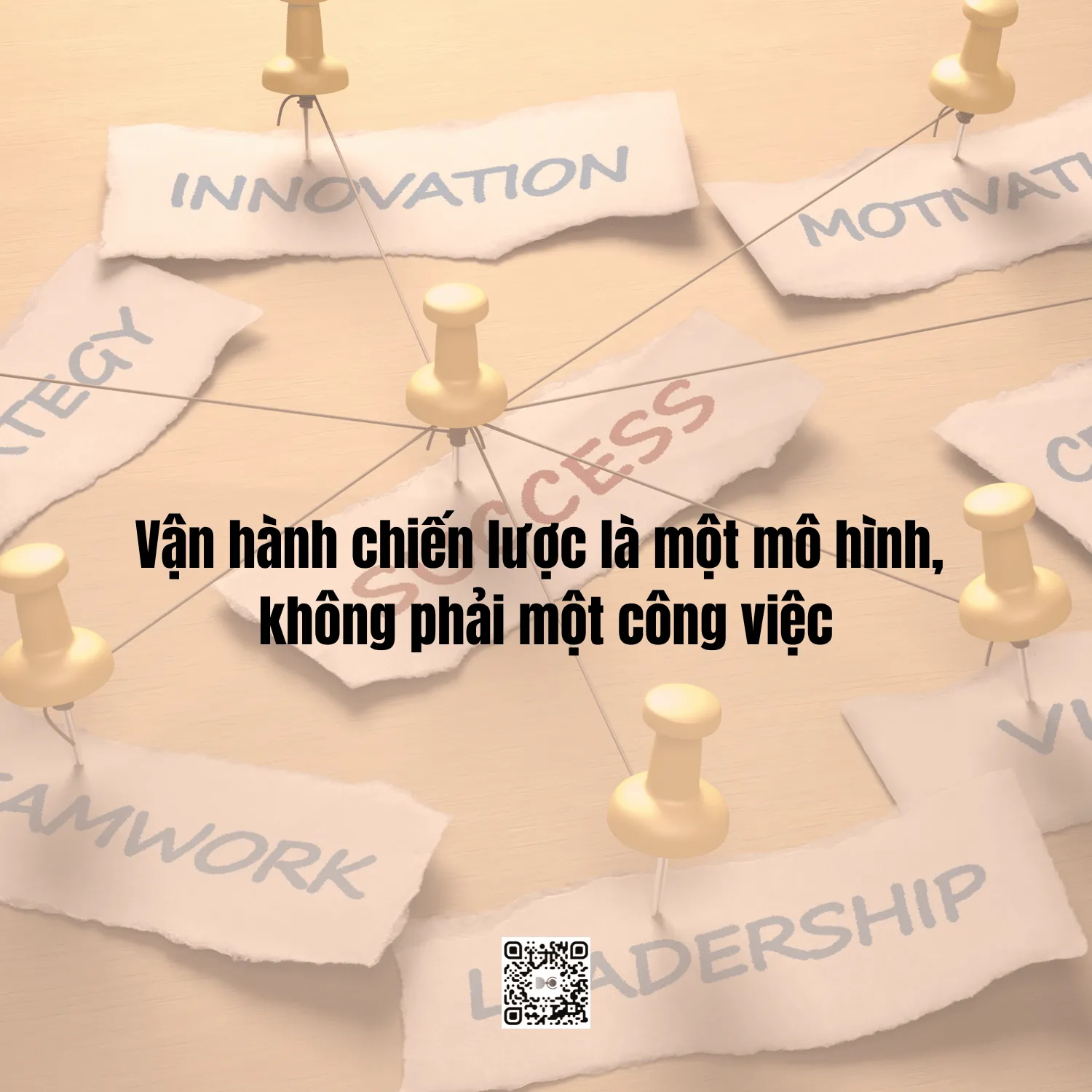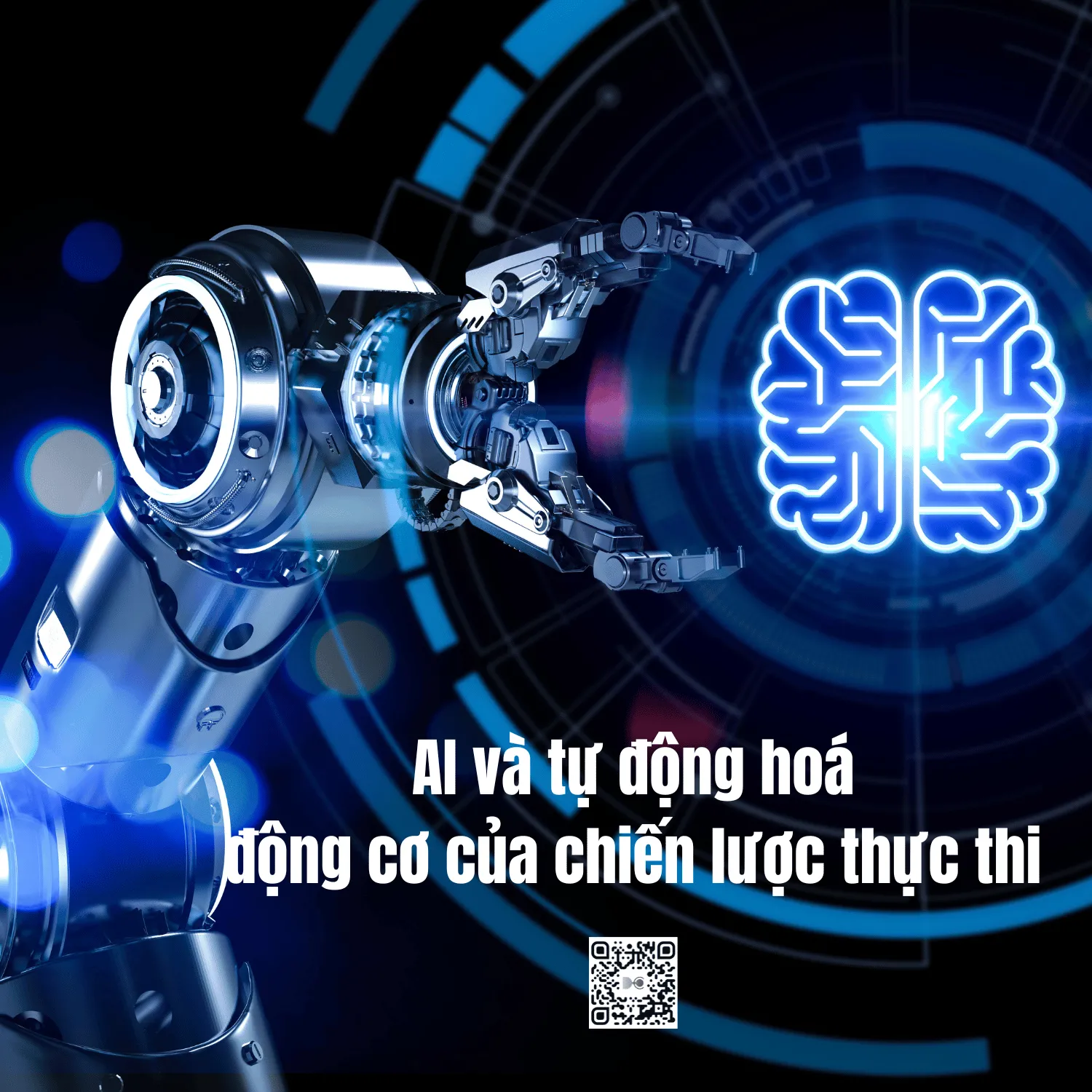One of the biggest mistakes Vietnamese businesses make today is believing that “having a strategy” means “doing a strategy.” But in reality, most strategies remain in PowerPoint files, never being put into action in a vivid way in every decision, every process, or every digital management tool. In the era of AI and automation, strategic capability is no longer a blueprint — it is the ability to translate strategy into actions that can be measured, replicated, and continuously optimized.
Strategy is not a map, it’s how you move
Many businesses have a great strategy on paper. Everything is well defined: vision, mission, core values, long-term goals. But what is lacking is the ability to execute the strategy — the ability to translate the strategy into a coherent set of actions across the system.
Strategy, if not lived in each process, is just a beautiful manifesto.
A business can claim to be “customer-centric”, but if the sales process remains fragmented, customer care remains reactive, and data remains fragmented, then “customer strategy” only exists on a banner.
Therefore, modern strategy must be “dynamic” – that is, not only directional, but also self-operating and self-correcting thanks to data and technology.

Strategy execution is a model, not a job
In many businesses, “strategy execution” is relegated to a single department, or even a few individuals. This approach is outdated.
Strategy execution must be a symbiotic ecosystem of people, data, and technology – where strategy is not just “communicated,” but is encoded into operational processes and systems.
For example:
- When a company builds a CRM system, customer strategy becomes more than just a guideline; it becomes operational data—measurable, analyzeable, and automatically respondable.
- When a company builds an AI-driven supply chain, cost optimization is no longer a slogan but a living algorithm—always updating, self-learning, and adapting.
The bottom line is: strategy is not about managing – it’s about training systems.

AI and Automation – The Engine of Strategy Execution
AI is more than just a tool; it is becoming the second brain of business strategy.
Previously, strategy relied on human analysis and manual reporting – information lag was high, decisions were highly subjective. Now, with AI and automation, businesses can:
- Analyze real-time market data,
- Predict user behavior,
- Make instant strategic decisions based on machine learning models.
Strategy is therefore no longer a three-year plan, but a daily decision-making system. The difference between a leader and a follower is that — who owns a digital process that can “understand – learn – act” faster.

Redefining “strategy execution” – from human action to symbiotic mechanism
In the new business model, people and technology do not replace each other – they complement each other.
People set the direction, establish the value principles; AI and digital processes do the rest – collect data, execute, test, adjust.
Strategy then becomes not a “directive” from the top down, but a logical chain that runs throughout the entire organization – that can be measured, replicated, and replicated at any scale.
Businesses that understand this early will move from “strategic management” to “system training” thinking – and this is the leap forward of the automation era.
Strategy in the AI era – needs to be lived, updated, learned
Whereas in the past, strategy was considered a long-term, rarely changing framework, now strategy must be able to adapt continuously.
Every new data stream, every market trend, every change in customer behavior can require the strategy to be refined.
Therefore, today’s strategy cannot be “fixed” – but must be designed to learn.
In other words, modern strategy is a living organism – with memory, with feelings, with the ability to improve itself. And to achieve that, businesses need a technology platform that can “read” and “learn” from every operational touchpoint.
From strategy on paper to strategy in the system
Strategy is no longer a board meeting, no longer a presentation to investors.
Strategy only truly exists when it runs in the system – and produces measurable results.
Businesses that can “run strategy” instead of just “write strategy” will understand that:
In the digital age, strategy is not in the plan — it is in the ability of the business system to learn and react.












